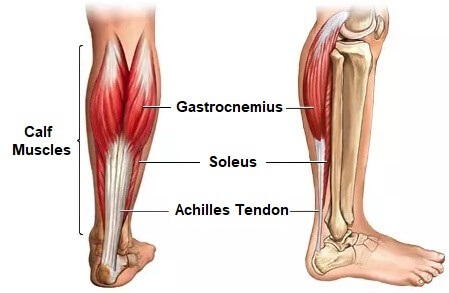CALF STRAIN
Have you experienced any of the following?
Sudden sharp pain in the calf
Swelling or bruising
Snapping or popping sensation in your calf
Difficulty balancing or putting weight on one leg
Difficulty walking, running or jumping due to pain or weakness
Brief anatomy
The calf is made up of two large muscles, the gastrocnemius and soleus. They both play a key role in producing force required for running and jumping
Strain Grades
Grade I: Sharp onset of pain during activity, may be able to continue with activity. Likely to feel tight and sore post exercise
Grade II: Sharp onset of pain that causes you to stop activity. Painful to walk after the activity, some bruising or swelling may be present
Grade III: Severe and immediate pain pain onset. Unable to continue with activity, likely bruised and swollen.
Scans or surgery
Physiotherapy is the best management follow calf tear, ultrasounds can be used to determine the size of the tear but are often unnecessary. Surgery is typically only required following a full tear of the muscle
Red flags
There are a few things to be aware of that may presenting as calf pain:
Warm and red skin over the calf
Throbbing pain when moving around
Large amount of swelling where the skin becomes stretched and shiny
If you notice any onset of any of the above changes, get into contact with your doctor
What will physio treatment involve?
Strengthening exercises to rebuild strength and prevent re-injury occurring
Teaching you the skills to help you manage your injury
Manual techniques such as massage or dry needling to release built up tension
Guided return to sport and exercise, including specific advice and exercises tailored to your sport and goals
Recovery time
Recovery time will depend on the grade of strain, your lifestyle factors and your personal goals. Return to sport may range from 2-8 weeks but we will work with you to ensure a safe and strong return to your activities!

